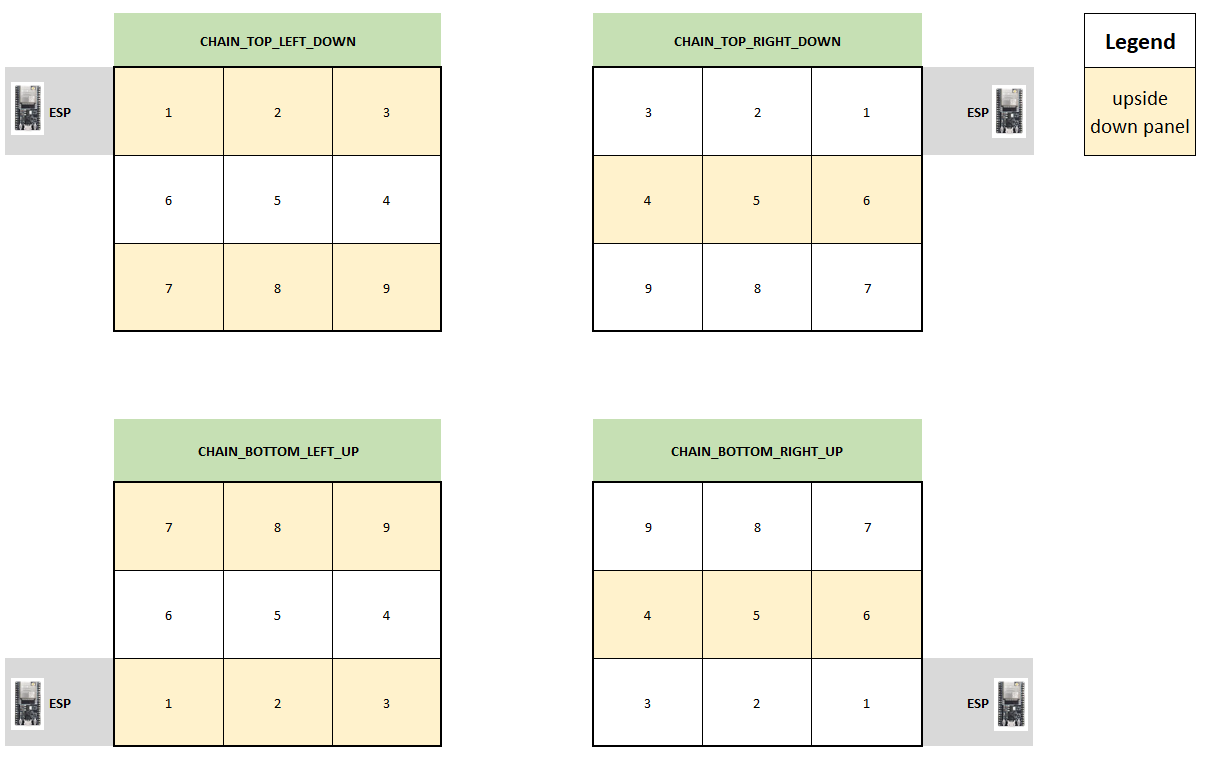This is the PatternPlasma Demo adopted for use with multiple LED Matrix Panel displays arranged in a non standard order (i.e. a grid) to make a bigger display.
When you link / chain multiple panels together, the ESP32-HUB75-MatrixPanel-I2S-DMA library treats as one wide horizontal panel. This would be a 'standard' (default) order.
Non-standard order is essentially the creation of a non-horizontal-only display that you can draw to in the same way you would any other display, with VirtualDisplay library looking after the pixel mapping to the physical chained panels.
For example: You bought four (4) 64x32px panels, and wanted to use them to create a 128x64pixel display. You would use the VirtualMatrixPanel class.
Refer to this document for an explanation and refer to this example on how to use.
-
Refer to this document for an explanation and refer to this example on how to use.
-
In your Arduino sketch, configure these defines accordingly:
#define PANEL_RES_X 64 // Number of pixels wide of each INDIVIDUAL panel module.
#define PANEL_RES_Y 32 // Number of pixels tall of each INDIVIDUAL panel module.
#define NUM_ROWS 2 // Number of rows of chained INDIVIDUAL PANELS
#define NUM_COLS 2 // Number of INDIVIDUAL PANELS per ROW
#define PANEL_CHAIN NUM_ROWS*NUM_COLS // total number of panels chained one to another
#define VIRTUAL_MATRIX_CHAIN_TYPE <INSERT CHAINING TYPE HERE - Refer to documentation or example>
- In your Arduino sketch, use the 'VirtualMatrixPanel' class instance (virtualDisp) to draw to the display (i.e. drawPixel), instead of the underling MatrixPanel_I2S_DMA class instance (dma_display).
- Brian Lough for the Virtual to Real pixel co-ordinate code.
YouTube: https://www.youtube.com/brianlough
Tindie: https://www.tindie.com/stores/brianlough/
Twitter: https://twitter.com/witnessmenow
- Galaxy-Man for the donation of hardware for testing.

